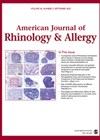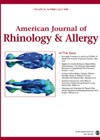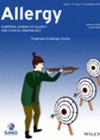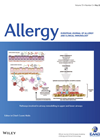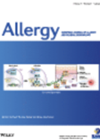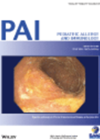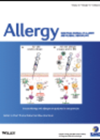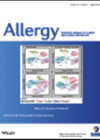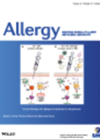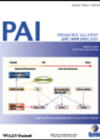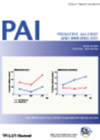
Journal Reviews
Does pollution worsen inflammatory nasal problems?
This ambitious study, conducted over a period of four years, assessed 27,863 patients and compared levels of allergic rhinitis (AR) or chronic rhinosinusitis (CRS) with the levels of air pollution recorded, as assessed by levels of particulate matter (PM10). They...
Prevention better than cure?
This systematic review looks at methods of ‘barrier protection’ or ‘barrier-enforcing’ to minimise allergic rhinitis symptoms, using 15 RCTs. Whilst the authors admit that patient numbers were small in a number of these studies, generally it seems that barrier techniques...
Allergic rhinitis, the usual suspects
Allergic rhinitis (AR) is characterised by allergen binding to IgE on mast cells and basophils and subsequent histamine, prostaglandine D2 (PGD2) and cysteinyl leukotrienes (cysLTs) release causing early-phase response. This is followed by late-phase response mediated by eosinophils. Other cells,...
Is non-allergic rhinitis as bad as allergic?
Non-allergic rhinitis (NAR) occurs when rhinitis symptoms are not associated with allergic, infective or anatomical reason. It is responsible for almost half of all cases of rhinitis and affects around 300 million worldwide. Assessing NAR patients’ quality of life (QoL)...
The hot nose
Capsaicin nasal spray can offer moderate to significant symptomatic relief to 70-80% of patients with idiopathic rhinitis (IR). Efficacy was also shown in lab studies. Nasal hyper reactivity (NHR), absence of allergy / infective rhinosinusitis, age limits (18-60), no anatomical...
Allergen immunotherapy and allergic rhinitis – EAACI guideline 2017
Allergic rhinitis (AR) is a common chronic childhood disease with considerable social burden and impact on quality of life, frequently necessitating treatment with various combinations of antihistamines and corticosteroids. The allergen immunotherapy (AIT), sometimes known as desensitisation therapy, can modify...
Prostaglandin versus leukotriene receptor-antagonists in treatment of seasonal allergic rhinitis RCT phase II
Seasonal allergic rhinitis is very common. Failure to control the disease with mono-therapy leads to dual therapy treatment with less compliance and reduced quality of life. A prostaglandin receptor antagonist (ONO-4053) showed some efficacy in controlling allergic rhinitis in animal...
Precision medicine in allergic rhinitis and chronic rhinosinusitis
Precision medicine (PM) with its ‘four Ps’ (personalised, predictive, preventive and participatory) is about appreciating differences between individuals when offering management options for health problems. Multiple groups interested in rhinology such as EPOS and ARIA supported a review of the...
Poor allergic rhinitis control increases the overall costs
Allergic rhinitis and asthma are common and can have significant effects on quality of life. However, not many studies have focused on the economic effects. The authors of this study performed a large-scale (over 60,000 patients) observational study to analyse...
Sublingual house dust mite immunotherapy
House dust mite immunotherapy in allergic rhinitis was shown to be effective in trials with a relatively small number of participants. The authors of this study performed a multicentre double-blind randomised controlled trial to investigate effects of house dust mite...
Blocked nose in children with allergic rhinitis
Nasal obstruction is a classic symptom in children with allergic rhinitis. While the nasal obstructive disorders including septal deformity, turbinate hyperplasia and adenoidal enlargement are widely recognised in adult nasal blockage, their relationship with paediatric allergic rhinitis however, is scarcely...
Growing up smelling the roses
How often do we ask about sense of smell in children? Undoubtedly, the olfactory function is seldom formally assessed in the paediatric population, although evidence exists to suggest its potential links with handicap in children’s learning and development. This large...

